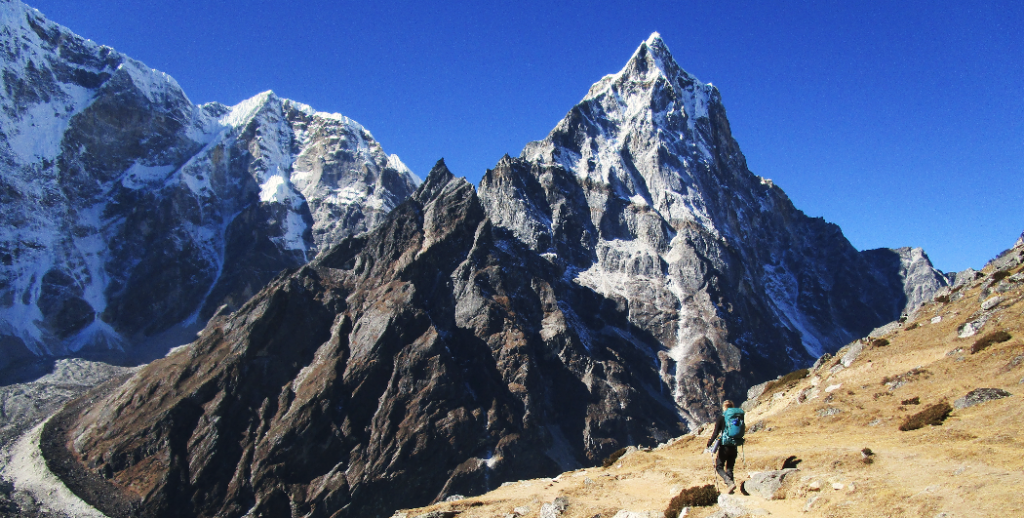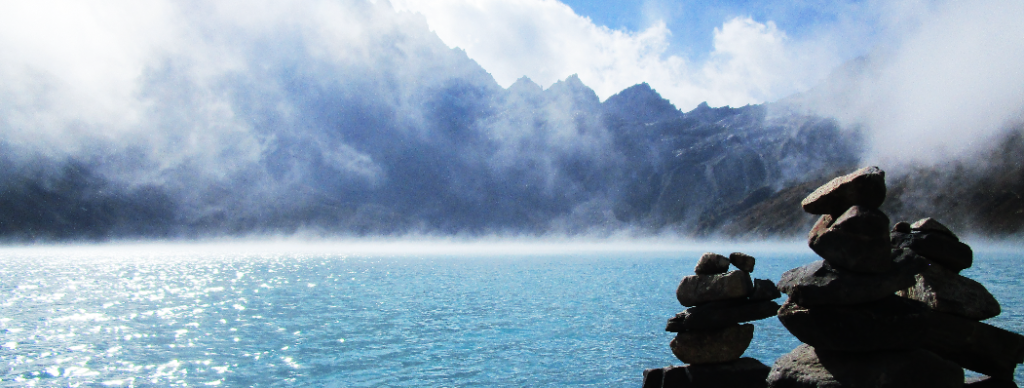In November 2018, I hiked the Everest circuit in Solokhumbu (Nepal himalayas), a journey of 175 km in which I crossed three of the highest passes in the world. It was an adventure of a lifetime and one I will never forget because of the endless views and physical challenges, but I also felt how vulnerable I was when I saw the effects of high altitude on those who weren’t properly acclimatized.
In this article, the most important physiological processess that occur at high altitude will be discussed. This article is the first one in a series of two; in the next article, high altitude related illnesses and the pathophysiology behind will be discussed.

Altitude, atmospheric pressure and acclimatization
The higher you get, the lower the atmospheric pressure will be. Although the percentage of each gas that contributes to the atmospheric pressure remains the same- 78% nitrogen, 21% oxygen and 1% other gases like carbon dioxide and water vapor-, the partial pressure of each of these individual gases will decrease at high altitude. This results in lower oxygen availability, to which the body needs to adapt in order to prevent hypoxia at tissue level. The respiratory and circulatory changes that take place during the process of acclimatization will be discussed now.
Respiration
Regarding respiration, the most important physiological changes that occur at high altitude are increase of respiration rate, resulting in alveolar hyperventilation, and an increased tidal volume. This causes extreme hypocapnia that can be partially compensated by renal clearance of bicarbonate until the altitude of 5500 m, but at higher altitude, compensation of the respiratory alkalosis is not possible anymore. Also, there is an increased diffusing capacity of the lungs due to expansion of the pulmonary vascular bed. It should be noted, however, that a decreased diffusing rate due to a decreased oxygen pressure gradient between the alveolar air and the capillary blood, has the opposite effect.

Circulation
Regarding the cardiovascular system, the most important change at high altitude is an increased cardiac output (especially an increased heart rate) due to hypoxia-related central nervous system stimulation. Also, respiratory alkalosis leads to a shift of the oxygen dissociation curve to the left (and thus an increase in oxygen affinity of hemoglobin). The third major physiological change is an increase in hemoglobin. Initially, this Hb increase is based on a decrease in the amount of plasma due to increased diuresis; later, this effect is caused by increased erythropoietin (EPO) production.
In the lungs, hypoxia causes vasoconstriction. Together with an increased cardiac output, hypoxic pulmonary vasoconstriction leads to an increased pulmonary artery pressure. An above-average increase of the pulmonary artery pressure is a risk factor for the development of HAPE (high-altitude pulmonary edema); this clinical condition will be discussed in the following article.
Tissues
In the tissues, the effect of the leftward shift of the oxygen dissociation curve on oxygen delivery is only limited, since this is the ‘plateau’ portion of the curve. At tissue level, one of the changes occurring during acclimatization is an increase of capillary density as a result of muscle fiber atrophy. However, the maximum oxygen uptake of tissues rapidly decreases above 4600 m, because of a decrease in the number of mitochondria. The oxidative enzyme activity increases.

High altitude related diseases
This article addressed the most important physiological processess that occur at high altitude. With this background in mind, the next article will discuss the most common high altitude related illnesses and the pathophysiology behind: acute mountain sickness (AMS), high altitude cerebral edema (HACE) and high altitude pulmonary edema (HAPE).
Literature
Diercks, R. (2016). Leerboek sportgeneeskunde (1e editie). Houten, Nederland: Bohn Stafleu van Loghum.
Donegani, E., Paal, P., …, & Hillebrandt, D. (2016). Drug Use and Misuse in the Mountains: a UIAA MedCom Consensus Guide for Medical Professionals. High alt med biol 17(3).
Duff, J. (2007). First aid and wilderness medicine (10e editie). Milnthorpe, UK: Cicerone Press
Johnson, C., Anderson, …, & Warrel, D. (2008). Oxford handbook of expedition and wilderness medicine (2e editie). Oxford, UK: Oxford University Press
Willems, H. (2014). Hoogteziekte, theorie en praktijk (1e editie). Huis ter Heide, Nederland: Han Willems.
The UIAA guideline: https://www.theuiaa.org/mountain-medicine/medical-advice/
The WMS guideline: https://www.wemjournal.org/article/S1080-6032(14)00257-9/fulltext
https://upload.wikimedia.org/wikipedia/commons/d/d9/Oxygen-Haemoglobin_dissociation_curves.svg




